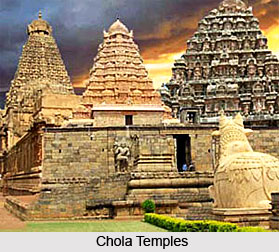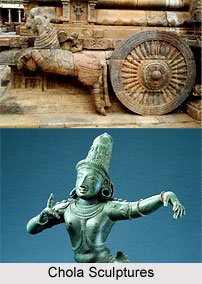 Tiruchirappalli of Tamil Nadu is believed to be of great ruled by Delhi Sultanate, Vijayanagar Empire, Nayak Dynasty, the Carnatic state and the British at different times. The archaeologically important town of Uraiyur which served as the capital of the Early Cholas is a suburb of Tiruchirapalli.
Tiruchirappalli of Tamil Nadu is believed to be of great ruled by Delhi Sultanate, Vijayanagar Empire, Nayak Dynasty, the Carnatic state and the British at different times. The archaeologically important town of Uraiyur which served as the capital of the Early Cholas is a suburb of Tiruchirapalli.
Tiruchirappalli in 2nd Century BC
Under the Early Cholas dynasty rule, Tiruchirappalli became an important administrative and cultural centre. Urayur, presently a suburb of Tiruchirappalli, is believed to have been their capital. The first ever reference to the Cholas is available in a stone edict of Asoka dated to 260 BC. Tiruchirappalli is also mentioned by Ptolemy in the 2nd century BC.The oldest human-built dam, Kallanai, was built by Karikala Cholan across the Kaveri River about 16kms from Uraiyur.
Tiruchirappalli in 5th Century BC
During the 5th century AD, Tiruchirappalli fell to the rising Pallava power. The Pallava king Mahendravarman I is credited with having laid the foundations of the Rock fort which his successors frequently renovated.
Tiruchirappalli in Medieval Age
In the second half of the 9th century, Tiruchirappalli was conquered by the Medieval Chola king Vijayalaya Chola who re-established Chola suzerainty over the region. Tiruchirappalli served as a regional stronghold and provincial capital of the Medieval Cholas under whom it reached the zenith of its glory.
The Cholas extended their undisputed sway over the cities of Urayur and Srirangam from the 9th century AD till the death of the last great Chola king Kulothunga I in about 1118.
The Chola state was, however, weakened by the continuous wars which the Later Cholas fought with Hoysalas. Rajendra Chola III, the last independent Chola king, ruled from 1246 to 1279. However, even during his time, the Hoysala king Vira Someshwara made a quick and successful incursion up to Srirangam. His successor Narasimha III made a grant to the Srirangam temple in the year 1256.
Srirangam was taken by Jatavarman Sundara Pandyan I in 1260 though there are Hoysala inscriptions in Tiruchirappalli district until the year 1296. In 1264 CE, Jatavarman Sundara Pandyan I fought and defeated the Hoysala King Vira Someshwara as attested by his inscription at the Sri Ranganathaswamy Temple in Srirangam. There are also Pandya inscriptions from the reign of Maravarman Kulasekhara I, Jatavarman Sundara Pandya II and Maravarman Kulasekhara II.
 In 1310, the Pandya king, Maravarman Kulasekara Pandyan I was murdered by his son Sundara Pandya who ascended the throne. But he was overthrown shortly afterwards by Vira Pandya, an illegitimate son of Maravarman Kulasekhara I. Sundara Pandya sought refuge in the court of Delhi and invited the Muslim general Malik Kafur to invade the kingdom offering him all assistance possible.
In 1310, the Pandya king, Maravarman Kulasekara Pandyan I was murdered by his son Sundara Pandya who ascended the throne. But he was overthrown shortly afterwards by Vira Pandya, an illegitimate son of Maravarman Kulasekhara I. Sundara Pandya sought refuge in the court of Delhi and invited the Muslim general Malik Kafur to invade the kingdom offering him all assistance possible.
Malik Kafur invaded the Pandya kingdom in 1311. Muslim annals describe it as the campaign against `the country of the yellow-faced Bir`. Vira Pandya was defeated at Kannanur and the temple of Srirangam was ransacked.
The Delhi Sultanate managed to establish complete sovereignty over the Pandyan kingdom by 1327. The province of Ma`bar was created and ruled by viceroys appointed by Delhi. In 1335, the then viceroy, Jalaluddin Ahsan Khan declared his independence and founded the Madurai Sultanate. The early sultans had to deal with frequent incursions by Hoysala rulers. The attacks ended with the death of the Hoysala king Veera Ballala III at Tiruchirappalli in 1343.
Tiruchirappalli under Vijayanagar Empire
By the middle of the 14th century, the Madurai Sultanate had begun to decline.Gradually, the Vijayanagar Empire began to establish their control over the northern parts of the kingdom. Tiruchirappalli was taken by the Vijayanagar prince Kampanna Udaiyar in 1371. Following the reconquest, the dilapidated Ranganathaswami temple at Srirangam was restored to its former glory. Madurai, the capital was later taken and by 1378, the Madurai Sultanate had ceased to exist.
The Vijayanagar Empire ruled the region from 1378 till the 1530s. Its rule was characterised by the revival of Hinduism and reconstruction of temples and monuments destroyed by the Muslim rulers. The province of Madurai was created and ruled by a viceroy or Nayak appointed by the Vijayanagar kings.
When the Vijayanagar Empire began to decline in the early 1500s, the Nayaks began to assert their independence. The first independent Madura Nayak king was Viswanatha Nayak who ruled from 1538 to 1563. The Tiruchi range comprised five major paalayams: Udayarpalayam, Ariyalur, Marungapuri, Thuraiyur and Cuddalore. They constructed new mandapams at several temples, including the Srirangam Sri Ranganathaswamy Temple, and the Rock Fort.
Tiruchirappalli in Modern Age
During the 19th century, Tiruchirappalli was famous throughout the British Empire for its unique variety of cheroot known as the Trichinopoly cigar. The municipality of Trichinopoly was created in 1866 as per the Town Improvements Act of 1865 followed by the municipality of Srirangam in 1871 and Golden Rock in 1972. The three municipalities were merged in 1994 to form the Tiruchirappalli municipal corporation. In 1875, the Prince of Wales paid a visit to the Ranganathaswamy Temple and donated a gold cup. The first Indian census conducted in 1871 returned a population of 76,530 for Tiruchirappalli making it the second largest city in Madras Presidency, next only to the capital city of Madras.
The Great Southern of India Railway Company was established in 1853 with its headquarters at Tiruchirappalli. In 1859, the company constructed its first railway line connecting Tiruchirappalli and Nagapattinam. The company was merged with the Carnatic Railway Company in 1874 to form the South Indian Railway Company. The South Indian Railway Company moved one of its principal workshops from Nagapattinam to Tiruchirappalli establishing the Golden Rock Locomotive Workshops in 1928. The company was eventually liquidated in 1944 and its assets taken over by the Government of India. Tiruchirappalli played an important part in the Indian Independence Movement. Many of its leaders such as V. V. S. Aiyar, P. Rathinavelu Thevar and T. S. S. Rajan hailed from Tiruchi. Tiruchi played an active role in the 1928 South Indian Railway Strike which lasted over three months. There were also strikes and non-violent protests during the Quit India Movement. In January 1948, there was a massive strike in Trichy Mills where over 350 workers struck work in response to the retrenchment of 178 of their colleagues by the management. Strikes, along with the peasant rebellion in Tanjore, boosted support for the Communist Party of India and K. Ananda Nambiar, a union leader represented Tiruchi in both the Madras legislature as well as the Lok Sabha. In the late 1970s, the then Chief Minister of Tamil Nadu, M. G. Ramachandran planned to move the administrative headquarters of the state to Tiruchi but the move was later shelved by successive governments.



















